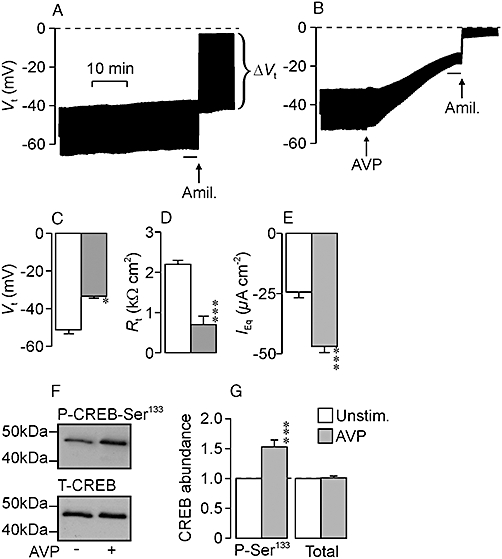Figure 6.

The response to arginine vasopressin (AVP). The upper panels show records of transepithelial voltage (Vt) derived from unstimulated (A) and AVP-treated (B, 10 nM, arrows) cells that were age-matched and at identical passage. Experiments were terminated by adding apical amiloride (Amil.; 10 µM, arrows). Throughout all such experiments pulses of transepithelial current (−10 µA·cm−2, 20 s) were injected every minute so that the transepithelial resistance (Rt) could be determined (Rt=ΔVt/ΔI) which allowed the equivalent short circuit current (IEq, i.e. the current required to hold Vt at 0 mV) to be calculated (IEq=Vt/Rt). The middle panels show pooled values (mean ± SEM) of Vt (C), Rt (D) and IEq (E) derived from a series (n = 9) of such experiments. These data are derived from analysis of data recorded immediately prior to the addition of amiloride. (F) Typical Western blots from experiments that explored the effects of AVP (10 nM, 30 min) upon the abundance of Ser133-phosphorylated (upper panel) and total (lower panel) cAMP response element binding protein (CREB). (G) Pooled data showing the effects of AVP upon the abundance of Ser133-phosphorylated (P-Ser133) and total CREB (n = 14). *P < 0.05, ***P < 0.001, significant effects of AVP; Student's paired t-test.
